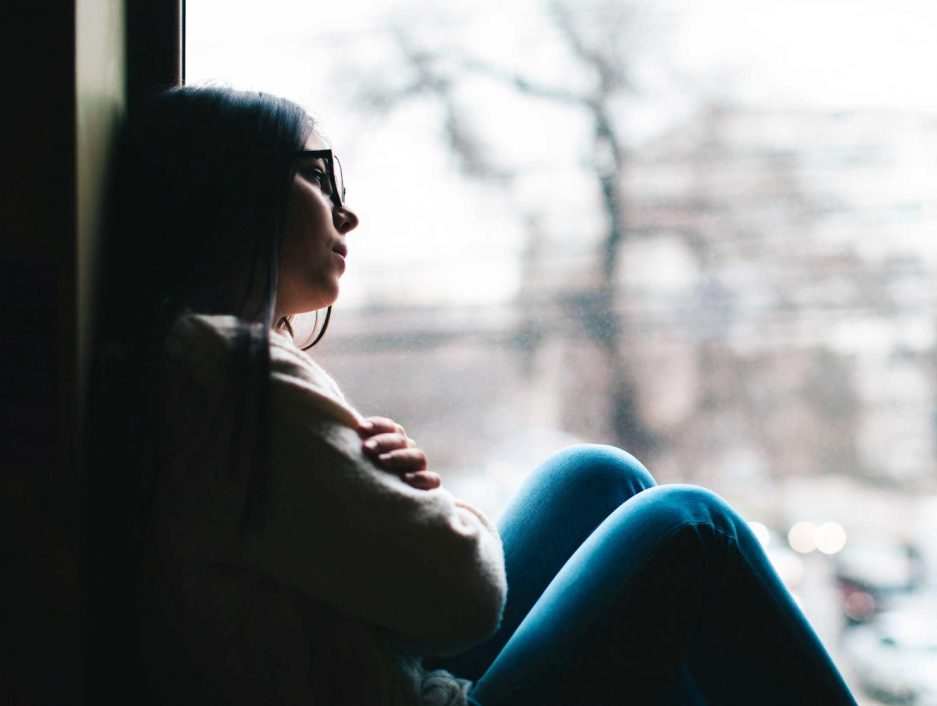Seasonal Affective Disorder
WELLNESS
Seasonal Affective Disorder impacts many during the winter season
Written by Jayla Lowery

With winter just about to kick in, Oregonians are about to face the state’s darkest and rainiest season. For some, this weather comes with a toll on their wellness, particularly in the form of SAD.
Seasonal affective disorder, or SAD, is a depression disorder and is activated due to a lack of sunlight, typically beginning in late fall and carrying through the winter. Around 10 million people in the US experience it every year.
“Seasonal affective disorder is common in a lot of places in the northwest,” said Health teacher Liz Kaempf.
“People will have mild to extreme depression during the wintertime. People might sleep all the time, or overeat, or have a hard time concentrating.”
Seasonal depression has the same symptoms and effects of typical clinical depression. People with SAD are often left with low energy, losing interest in activities, having mood swings, insomnia, and general feelings of hopelessness or worthlessness.
While clinical depression typically lasts throughout the year, symptoms of SAD are tied to one or two specific seasons.
Senior Bella Small faces acute tiredness and minor depression during late winter.
“Winter after the holidays, it gets easier for me to get stuck in sadness or depression when its cold and dreary every day. Every day feels more routine and monotonous,” said Small.
However, SAD also takes place for some during the spring and summer months.
“There is actually a summer version of SAD that occurs,” Health teacher Ms. Asp said.
“It’s definitely not just winter and fall.”
For almost 10% of people who experience SAD, summertime might bring on symptoms of depression due to longer and warmer days. A combination of disrupted schedules, body image anxiety, and heat contribute to summertime seasonal affective disorder.
For those who experience SAD during the wintertime, science finds many possible causes of seasonal depression. Changing melatonin and serotonin levels contribute to symptoms of depression from people experiencing SAD in the winter.
“Melatonin is the natural hormone our brain makes that induces us to feel tired. So, during the winter months, where we’re not getting enough sunlight, our brain will secrete more melatonin, which makes people extremely tired,” Kaempf said.
“The serotonin in your brain drops during the winter too.”
Research also cites a disruption of the body’s biological clock due to a lack of sunlight as a common cause of SAD.
Heading into the bulk of winter, students experiencing SAD can have a hard time juggling school, jobs, family and friends, and activities during the fall and winter.
But what can students who face SAD do to help themselves?
One thing experts suggest is light therapy, which comes in the form of UV lights that expose the body to rays that help regulate its internal clock. The light mimics outdoor light and can help regulate moods and promote sleep for those facing SAD.
Other healthy behaviors, such as exercise, a balanced diet, and having a steady schedule can help ease SAD symptoms. It is also encouraged to see a doctor or therapist about your SAD symptoms.
“Find someone to talk to,” Asp said.
“With depression, it can be hard to go to your friends. If they can’t wrap their head around it, they might say something like “it’ll get better.” But for a person who’s depressed, they really can’t believe that. Talking to one of our school counselors here is a really good place to start, and they can provide you with options and further help.”
With a large stigma on mental health, and especially on SAD, it can be hard for people to ask for help. But experts uphold that speaking to someone about feelings experienced from SAD are one of the best ways to ease symptoms.
“Friends are really the best way to get out of that depression for me,” Small said.
“Don’t feel any shame about it. We stay so quiet on mental illness because we think we should be able to overcome it,” Asp said. “Many people go through it, and if we are able to talk about it more, it begins to take away some of that secrecy and shame.”
SAMHSA (Substance Abuse and Mental Health Services Administration) National Helpline: 1-800-622-4357
National Suicide Prevention Lifeline: 1-800-273-8255
Crisis Text Line: Text CONNECT to 741741
More on seasonal depression at: https://www.helpguide.org/articles/depression/seasonal-affective-disorder-sad.htm (HelpGuide.org/SeasonalAffectiveDisorder)

Jayla Lowery is a current senior at Jesuit High School. She enjoys biking, reading, swimming, music, daydreaming, watching movies, and writing mediocre short stories and screenplays. Journalism has always interested her and she is excited to learn and write articles for the first time. She is really hoping to write pages focused on social issues and pop culture. She believes these topics deeply connect into Jesuit High School’s environment and culture and is interested in exploring the impacts of those subjects on Jesuit further. Jayla also hopes to write about music and movies and interview the many diverse and unique members of the Jesuit community. She is hoping to hear the perspectives and stories of people from all walks of life that make up the greater Jesuit High School community. She can’t wait to meet and talk to people she would usually never get the opportunity to! Jayla is hoping to studying screenwriting in college and hopes journalism will help her improve her writing skills and also help introduce her up to a new form of writing. She hopes she isn’t too nosy of a journalist and that this year is a very fun and exciting one and can hardly wait to get started!



